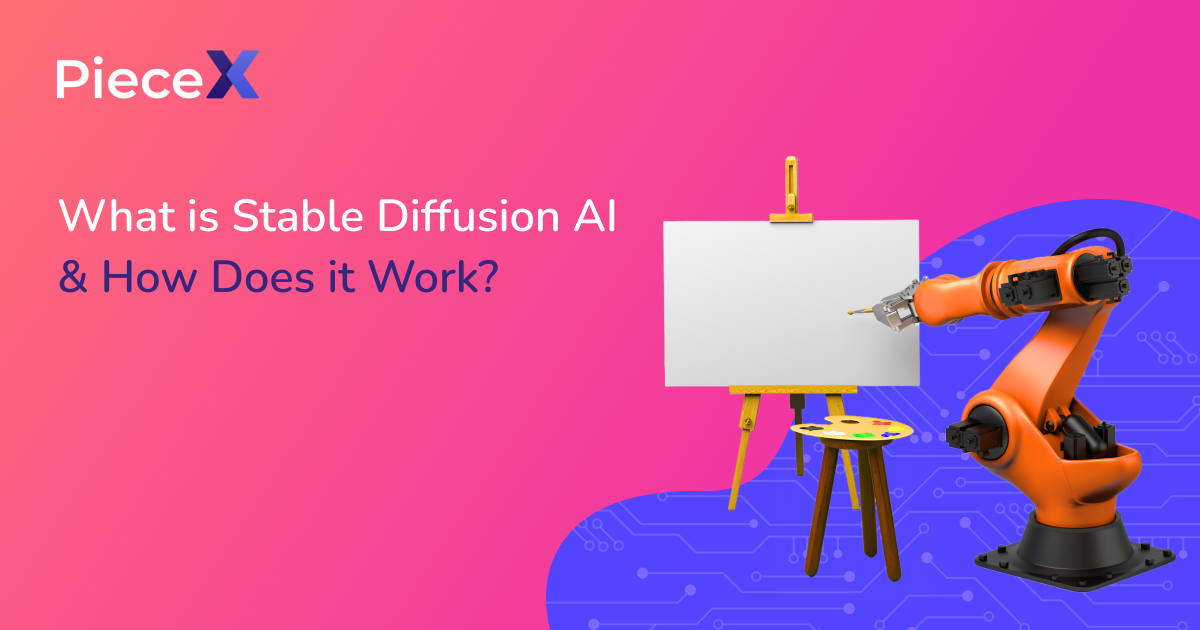
In the vast realm of artificial intelligence (AI), a new approach is emerging to address its limitations and pave the way for a more stable and reliable future. This approach is known as stable diffusion AI.
In this article, we at PieceX will explore the significance of stable diffusion AI, understand its core principles, discuss its benefits and applications, delve into the techniques and approaches involved, identify challenges and future directions, and examine real-world case studies that showcase its effectiveness.
Understanding Stable Diffusion AI
Stable diffusion AI can be described as an innovative methodology that aims to overcome the challenges faced by traditional AI systems. Unlike conventional approaches that rely on static training data, stable diffusion AI emphasizes the dynamic exploration of information to build models that can generalize better and exhibit increased robustness.
By incorporating the key principles of adaptability and continuous learning, stable diffusion AI ensures that AI models are more versatile and capable of evolving with changing circumstances.
Benefits and Applications of Stable Diffusion AI
The advantages of stable diffusion AI are numerous and far-reaching. Firstly, it greatly improves the generalization and robustness of AI models. Traditional AI often struggles to perform well in novel situations, but stable diffusion AI excels in adapting to new scenarios and unseen data.
This enhanced adaptability opens doors for applications in various fields, such as healthcare, finance, and autonomous vehicles, where reliable performance in real-world environments is crucial.
Additionally, stable diffusion AI offers enhanced interpretability and explainability. One of the concerns surrounding AI has been its “black box” nature, where decisions are made without clear explanations.
Stable diffusion AI employs techniques that allow for greater transparency, enabling users to understand the reasoning behind AI predictions and decisions.
Moreover, stable diffusion AI mitigates bias and addresses ethical concerns in AI systems. By continuously learning and adapting, these models can avoid the perpetuation of present in training data. This fairness and ethical consciousness make stable diffusion AI a valuable tool in creating AI systems that uphold social responsibility.
Techniques and Approaches in Stable Diffusion AI
Stable diffusion AI incorporates several cutting-edge techniques to achieve its objectives. Contrastive learning and self-supervised learning methods are employed to leverage large volumes of unlabeled data, allowing AI models to learn from a broader range of information. Regularization techniques are utilized to stabilize and fine-tune AI models, improving their overall performance and reducing overfitting.
Another key aspect is the integration of uncertainty estimation in AI algorithms. By quantifying uncertainty, stable diffusion AI models can provide confidence measures and make more reliable decisions. Furthermore, advances in transfer learning and domain adaptation facilitate knowledge transfer between different domains, enabling AI systems to adapt and perform well in new environments.
Challenges and Future Directions
While stable diffusion AI holds immense promise, there are challenges to overcome. Implementing stable diffusion AI at scale requires significant computational resources and efficient algorithms. Ethical considerations and potential risks associated with AI adoption must also be addressed, ensuring that stable diffusion AI remains accountable, fair, and secure.
To overcome these challenges and further improve stable diffusion AI, interdisciplinary collaboration is crucial. Researchers, policymakers, and industry professionals need to join forces to develop standards, share insights, and encourage responsible AI deployment. Continued exploration and improvement are essential to unlock the full potential of stable diffusion AI.
Case Studies and Success Stories
Real-world examples showcase the transformative impact of stable diffusion AI. In healthcare, stable diffusion AI has been utilized to predict disease outcomes, optimize treatment plans, and improve patient monitoring. Financial institutions have leveraged stable diffusion AI to enhance fraud detection and risk assessment. Autonomous vehicles have benefited from stable diffusion AI, enabling them to navigate complex environments and make informed decisions.
Conclusion
Stable diffusion AI represents a significant step forward in building more robust, ethical, and reliable AI systems. By dynamically exploring information, stable diffusion AI addresses the limitations of traditional AI approaches, leading to improved generalization, interpretability, and fairness. It offers a wide range of applications in healthcare, finance, and autonomous vehicles, where reliable performance and adaptability are paramount.
As we look to the future, stable diffusion AI holds immense potential. Its implementation will require concerted efforts from researchers, policymakers, and industry professionals to address challenges and foster interdisciplinary collaboration. By doing so, we can shape a future where AI systems are more reliable, ethical, and beneficial to society.
In conclusion, stable diffusion AI offers a promising solution to the limitations of traditional AI approaches. Its dynamic exploration of information, improved generalization, interpretability, and fairness make it a vital component in building robust and ethical AI systems. With continued research, collaboration, and responsible deployment, stable diffusion AI can unlock the full potential of artificial intelligence, shaping a future where AI works seamlessly with human needs and aspirations.
For more articles like this, make sure to visit our knowledgebase blog.
